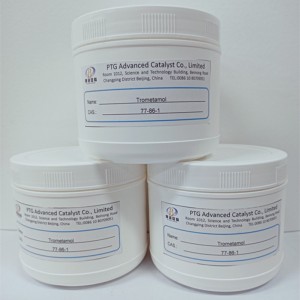Monoethanolamine(2-aminoethanol ethanolamine)
|
Chemical nature |
Ethanolamine is a kind of viscous hygroscopic amino alcohol contains both amine and alcohol chemical groups. It is widely distributed inside the body and is a component of lecithin. It has many kinds of industrial applications. For example, it can be used in the production of agricultural chemicals including ammonia as well as the manufacturing of pharmaceuticals and detergents. It can also be used as a surfactant, fluorimetric reagent and removing agent of CO2 and H2S. In pharmaceutical field, ethanolamine is used as a Vascular Sclerosing agent. It also has antihistaminic property, which alleviates the negative symptoms caused by H1-receptor binding. |
|
|
Applications |
Ethanolamine is used as an absorption agent to remove carbon dioxide and hydrogen sulfide from natural gas and other gases, as a softening agent for hides, and as a dispersing agent for agricultural chemicals. Ethanolamine is also used in polishes, hair waving solutions, emulsifiers, and in the synthesis of surface-active agents (Beyer et al 1983; Mullins 1978; Windholz 1983). Ethanolamine is permitted in articles intended for use in the production, processing, or packaging of food (CFR 1981). Ethanolamine undergoes reactions characteristic of primary amines and of alcohols. Two industrially important reactions of ethanolamine involve reaction with carbon dioxide or hydrogen sulfide to yield water soluble salts, and reaction with long chain fatty acids to form neutral ethanolamine soaps (Mullins 1978). Substituted ethanolamine compounds, such as soaps, are used extensively as emulsifiers, thickeners, wetting agents, and detergents in cosmetic formulations (including skin cleaners, creams, and lotions) (Beyer et al 1983). |
|
|
Physical form |
clear, colorless or pale yellow-colored |
|
|
Shelf life |
According to our experience, the product can be stored for 12 months from the date of delivery if kept in tightly sealed containers, protected from light and heat and stored at temperatures between 5 - 30°C. |
|
|
Typical properties
|
Boiling Point |
170 °C(lit.) |
|
Melting point t |
10-11 °C(lit.) |
|
|
Density |
1.012 g/mL at 25 °C(lit.) |
|
|
refractive index |
n20/D 1.454(lit.) |
|
|
Fp |
200 °F |
|
|
Vapour Pressure |
0.2 mm Hg ( 20 °C) |
|
|
LogP |
-2.3--1.91 at 25℃ |
|
|
pka |
9.5(at 25℃) |
|
|
PH |
12.1 (100g/l, H2O, 20℃) |
|
Safety
When handling this product, please comply with the advice and information given in the safety data sheet and observe protective and workplace hygiene measures adequate for handling chemicals.
Note
The data contained in this publication are based on our current knowledge and experience. In view of the many factors that may affect processing and application of our product, these data do not relieve processors from carrying out their own investigations and tests; neither do these data imply any guarantee of certain proper- ties, nor the suitability of the product for a specific purpose. Any descriptions, drawings, photographs, data, proportions, weights, etc. given herein may change without prior information and do not constitute the agreed contractual quality of the product. The agreed contractual quality of the product results exclusively from the statements made in the product specification. It is the responsibility of the recipient of our product to ensure that any proprietary rights and existing laws and legislation are observed.









